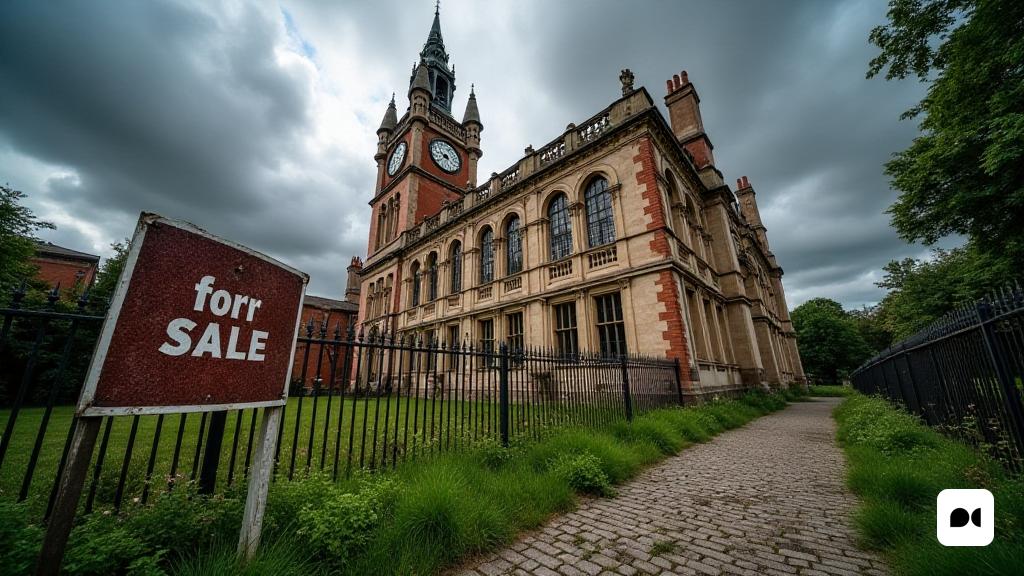A Journey Through Time: The Legacy of County Hall
Nestled in the vibrant town of Ipswich, County Hall stands as a testament to both architectural grandeur and historical significance. This Grade II listed structure, designed in the Tudor style, first opened its doors in 1837 and has served various roles, including that of a prison and a courthouse, before becoming the headquarters for local governance.
Notably, County Hall witnessed a pivotal moment in royal history when it hosted the divorce proceedings of Wallis Simpson in 1936, a case that would lead to King Edward VIII’s abdication. This event reshaped the British monarchy and the building itself has since become a relic of that transformative era.
The Decline: From Vibrant Hub to Abandoned Structure
Despite its rich history, County Hall has faced a troubling fate in recent years. After the Suffolk County Council vacated the premises in 2004, the building fell into disrepair, becoming a canvas for neglect and vandalism. Multiple proposals to repurpose the site have been met with challenges, leaving it in a state of deterioration.
In 2012, the Victorian Society identified County Hall as an endangered building, lamenting its fall from grace. Once a symbol of justice and civic pride, it now evokes feelings of sorrow and frustration among local residents and preservationists alike.
Royal Intrigue: Wallis Simpson and the Abdication Crisis
The connection between County Hall and Wallis Simpson is a compelling chapter in its history. Simpson, an American socialite, found herself at the center of a scandal when she sought to divorce her first husband, paving the way for her relationship with Edward VIII. The court proceedings held at County Hall were not just legal formalities; they were a catalyst for a constitutional crisis that ultimately changed the course of British history.
Edward’s heartfelt abdication speech, in which he confessed that he could not fulfill his royal duties without the love of the woman he cherished, reverberates through time. This personal sacrifice led to his brother, George VI, ascending the throne, marking a significant transition in the monarchy.
A New Chapter: The Auction and Future Prospects
The latest development in the saga of County Hall is its impending auction, scheduled for remote bidding through Savills. With a guide price set at £895,000, the auction represents not just a potential sale, but an opportunity for revitalization. The new owner will inherit the planning permissions for converting the building into residential flats, reigniting hopes for its restoration.
The implications of this auction extend beyond mere financial transactions; they touch upon the preservation of history and the potential for rejuvenation of a community landmark. As the bidding date approaches, the future of County Hall hangs in the balance, waiting for a visionary to breathe new life into its storied walls.
Reflections on Heritage and Community Responsibility
As we stand on the cusp of this auction, the fate of County Hall serves as a reminder of our collective responsibility to safeguard our historical treasures. The building’s journey from a center of justice to a neglected structure reflects broader themes of change, resilience, and the enduring value of heritage in our rapidly evolving society.
Whether the new owner opts to develop the site or pursue alternative paths, the decision will undoubtedly resonate throughout Ipswich, shaping not only the physical landscape but also the cultural narrative of this historic town.

